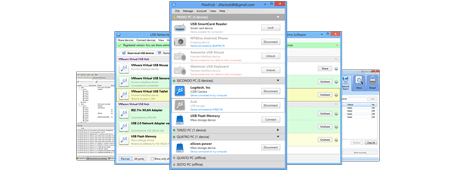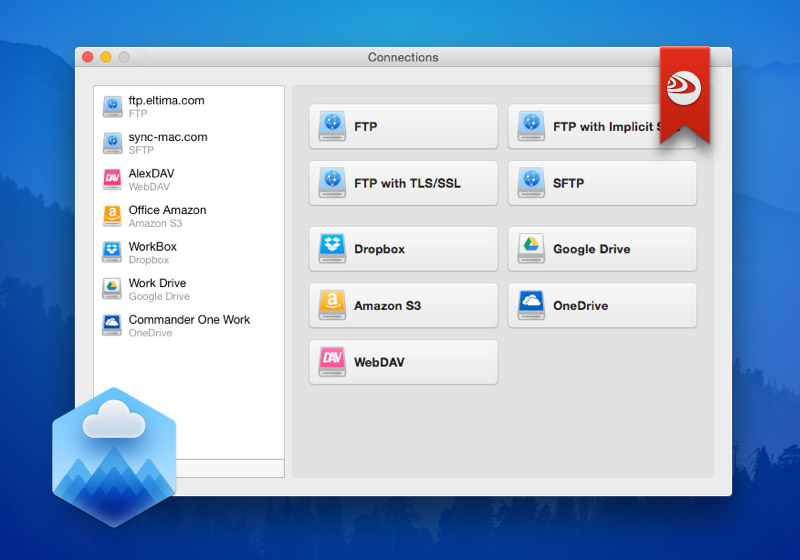

You may have several cloud storage services and need to move data between them. It’s super useful to be able to jump right to those areas without drilling up and down in a complex directory structure. I created one connection with a mount point to my media upload directory, and another connection that takes me to the top level of my blog. I have to say, I’m finding it invaluable to have multiple mount points stored in CloudMounter for my podfeet server via CloudMounter’s SFTP connection. You could name one Google Drive Work and Google Drive Home, be logged into them both, and this would make it much less likely that you store the wrong data on the wrong account. With CloudMounter, you can have multiple connections to the same service, and you get to name those connections. You can’t actually be logged into two accounts at the same time.

A lot of people have Google Drive for work but also have a personal Google Drive. I know, Apple says to not worry my pretty little head about it, they’ll manage the storage for me, but I want control! Multiple AccountsĪnother problem with cloud services is when you have multiple accounts with the same service. I really want CloudMounter to be able to access iCloud Drive, because it doesn’t allow any kind of selective sync.

It’s really a shame that Apple doesn’t allow CloudMounter access to iCloud Drive, but the developers keep looking for a way to do it. You’ll notice that iCloud isn’t in that list. You can also ad servers using FTP, FTP with implicit SSL, FTP with TLS/SSL, and SFTP. The cloud services available in CloudMounter are: Dropbox, Google Drive, Amazon S3, OneDrive, webDAV servers, OpenStack Swift, Backblaze, and Box. Using CloudMounter I can save that disk space and only sync it on one account instead of both, and yet still have access to those files on both accounts. Often I want to mess around in a recording from my personal account, which means I have to have everything synced from both accounts, wasting valuable local storage.
Eltima cloudmounter mac#
I use a separate account on my Mac to do the video screencasts for ScreenCasts Online, and I need to have the files in Dropbox for Don. This concept of a virtual mounted drive really solves a problem I have. You can navigate to the top level of the Finder, or you can use the menubar app to show them in the Finder.

There are two ways to view your virtual cloud drives.
Eltima cloudmounter how to#
CloudMounter walks you through how to do it so it’s pretty easy. You do need to enable a CloudMounter extension in System Preferences in order to see the loading status of the files you’ll have located on your mounted drives. You can of course also have these services installed separately from CloudMounter so if you want some files locally synced for times when you’re off the ‘net, you can do that in parallel to using CloudMounter. Nothing is synced locally to your machine, and yet all of it is available to you, as long as you have an Internet connection. Once you’ve authenticated to them using CloudMounter, each storage service shows up as a (virtual) mounted drive, not a folder on your desktop.
Eltima cloudmounter install#
You install CloudMounter on your Mac (or PC) and then you add connections to your various cloud services. And what if you add OneDrive and Box and Google Drive to your arsenal? They all have selective sync options but your management job is just multiplied.ĬloudMounter solves this problem in an interesting way. Dropbox does have a feature called Selective Sync so you can pick and choose which files are locally stored, but it requires you to keep managing those folders. Pretty soon this becomes a problem because you don’t have enough internal storage to keep all of that data locally. You start filling that up with data, and Dropbox automatically keeps a local copy and a cloud copy. Let’s walk through the different problems CloudMounter solves.Ĭloud storage is great. You may also have walked away because you didn’t like their pricing model, but that has changed recently with version 3.0 so it’s worth taking another look. I’m sure glad he did because I do think this is a very valuable service. When I first looked at it, I didn’t think it was for me either, but luckily my contact at Eltima, the makers of CloudMounter, wouldn’t let me walk away until he was sure I understood what it could do. If you’ve taken a look at CloudMounter in the past and didn’t see the value of it, stick with me. I’ll dig into more of the specifics of the problems it solves as I go through the review. CloudMounter is designed to help manage the plethora of cloud storage services we’re all using today. I’ve recently come across an interesting service called CloudMounter.


 0 kommentar(er)
0 kommentar(er)
